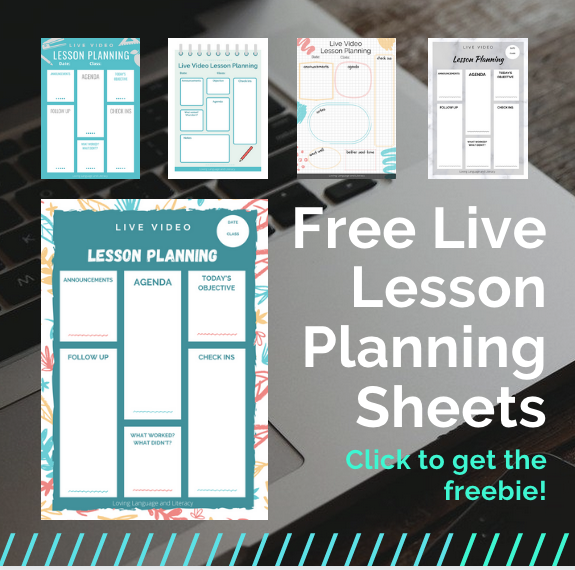I burst into tears twice last Thursday. I had been doing this online learning thing with my 3-5th grade EL students for 9 days at that point. Nothing was even going horribly wrong. I had been in contact with almost all my students at that point. Daily Zoom meetings with my 4th grade co-taught class had been going well. One of my administrators actually told me to work less hours. So why was I feeling this way?
Over the next few days, I realized I had hit the online learning wall–and I wasn’t the only one who had.
In my life, there have been a few times of crisis where I was able to sustain unreasonable amounts of energy. Grad school deadlines, family crises, health issues of a loved one. Have you ever felt yourself tap into that superwoman mode when you really needed to?
When I saw this crisis looming, I started endlessly researching and testing out ways to connect with my students while shifting to online learning. I’ve become a pro at Google classroom, Zoom, and Flipgrid. I’ve researched the endless free online learning resources available to teachers. I’ve put in long days, continued my grad classes in the evenings, and blogged about what has been working for me to try to help others.
But here’s the thing. We cannot expect ourselves to sustain a crisis-mode level of energy. Something about the biology of adrenaline and stress will only let us work at an intense pace for a period of time. We can’t live in that place of chronic stress though.
So last week, I hit the wall. Have you? Hopefully you’re not bursting into tears like me (where my Enneagram 4s at). But If you are feeling stuck too, here’s what is helping me move forward.
Pushing through the online learning wall
Name the grief
Grief isn’t limited to the loss of a person. We have lost our sense of normalcy. We’ve lost the rest of the school year with our students. We’ve lost our sense of safety. We’re feeling anticipatory grief about what losses are coming in the future. It’s OK to take some time to process these losses. Write it down. Talk it out. Don’t get wrapped up in guilt and comparison. We are all allowed to feel the weight of this moment. Brene Brown’s new podcast helped me with this one.
Let go of too-high expectations
It is hard to accept, but we can’t give our students the same experiences we wanted to. There is no way that we can follow the pacing guide we made in August as if this virus had never happened. Thankfully, the pressure of state-mandated tests are lifted for me for this year, so I’m thinking about what creative projects I couldn’t have done if we were in school preparing for tests. What would you love to do with your students now that we have the gift of time? What are the essential things they will need for next year? Start there.
Simplify your online instruction
There is an overwhelming amount of resources out there for teachers right now. Don’t get educational FOMO and try to do it all. Pick two things to start with. For me, it was Google classroom and Zoom. Those two platforms have worked for me so far. Limit yourself to only adding 1 or 2 new things per week. Write them down and stick to it. There will be time to try out Flipgrid, Kahoot, or Nearpod in the coming weeks. These are the free online resources that have been great with my ELs. Let go of the pressure to do it all, and let go of the teacher comparison game.

Work with your hands
The night after my cry fest, I made a huge homemade lasagna. I didn’t have the noodles, but it was actually really therapeutic to make them from scratch. Just the act of cooking and moving my hands helped me slow down my anxious thoughts. Quit scrolling. Turn off the news. Try baking, knitting, drawing, or whatever you enjoy.
Move your body
The absolute best thing for my mental health lately has been walks and slow jogs. If you are stuck inside, find an online workout. If possible, go get some fresh air and take a walk. After a traumatic experience a few years ago, I started jogging (if you know me, this was not normal). My husband was an occasional runner turned marathoner, so this jogging thing is his fault. He tried to tell me how helpful running was for him, but at that time, I was a hard-core anti-runner. I never understood why someone would do that to themselves. When I first started, I felt like a literal sack of potatoes trying to jog up a hill. Over time, it got a tiny bit easier. I also learned that you shouldn’t run with all out energy if you are just starting–this sounds so dumb now, but I thought runners always sprinted! The free guided run audio tracks from the Nike Run Club app helped me a lot as a beginner. Also our husky howls at us every morning until we take her on her morning run. As I learned in my Siberian Huskies for Dummies book: A well exercised husky is a well behaved husky. See the evidence below:

Teacher, I know you are doing your best with this online learning thing!
You’ve been thrust into a totally new way of teaching. We’ve been problem solving, advocating, innovating, and doing it all without clear guidance from the top (of the district, state, or country). I don’t know all the lessons we are meant to learn in this season, but I will keep myself open to it. I’m writing these reminders for myself, too.
Grab my totally free Live Video Lesson Planning Sheet!


